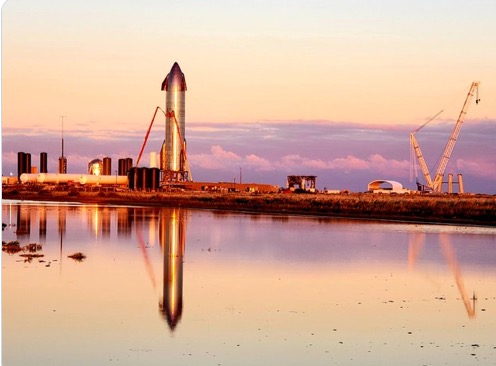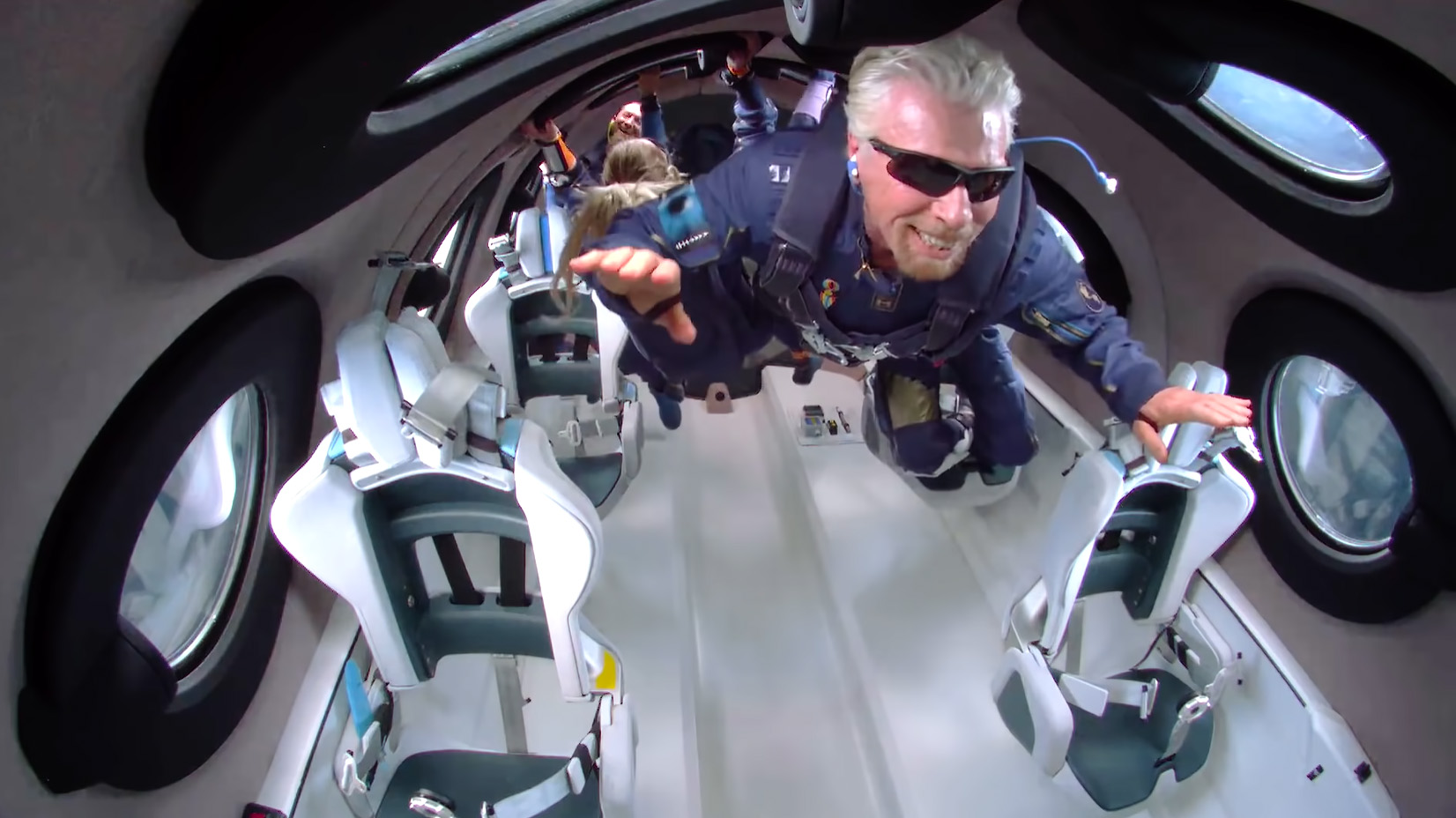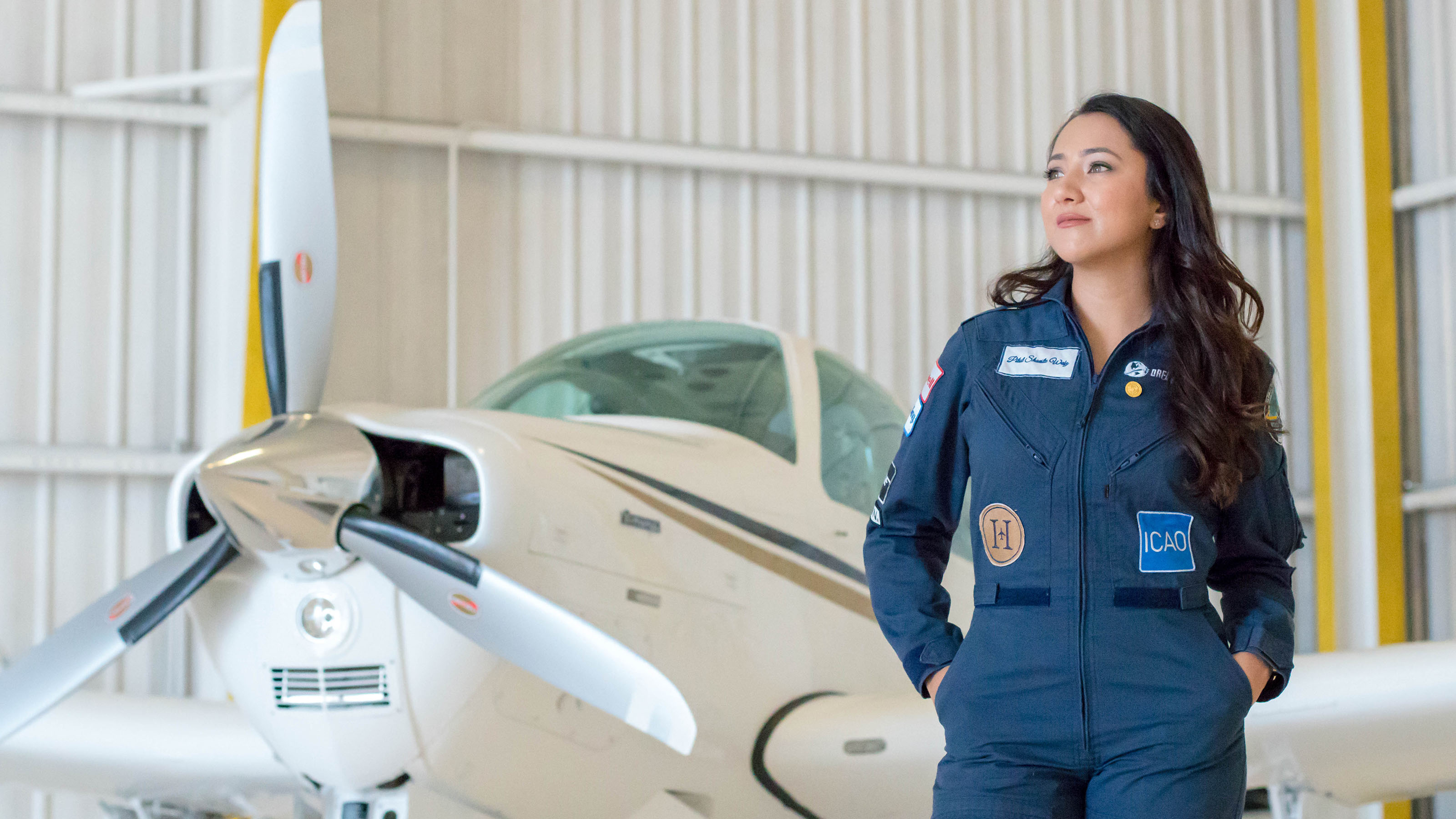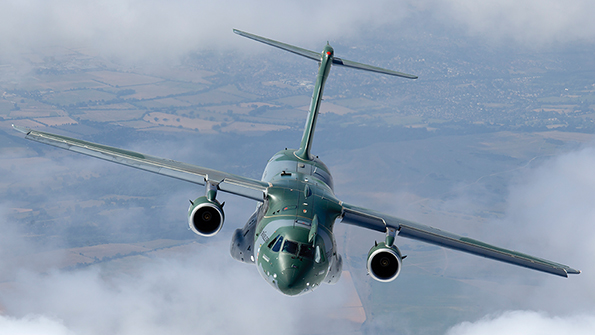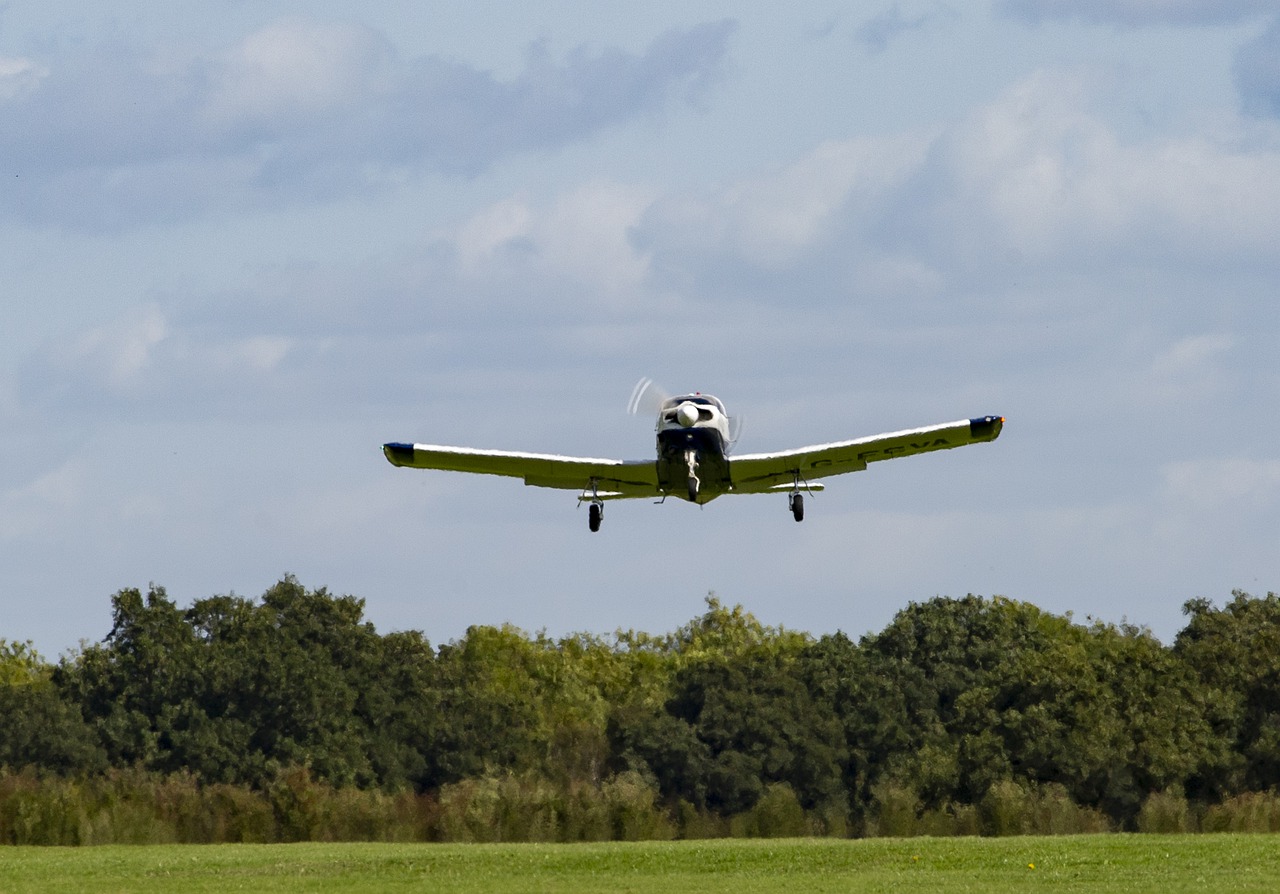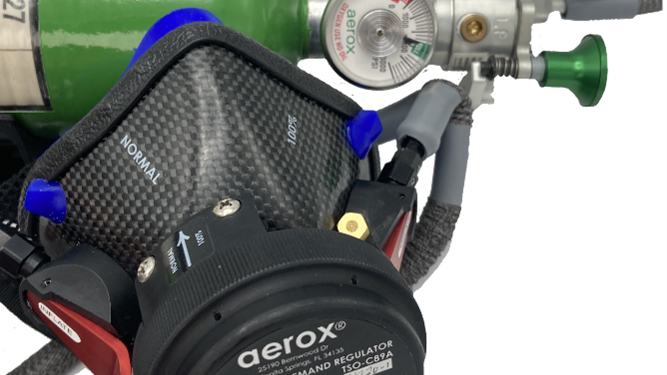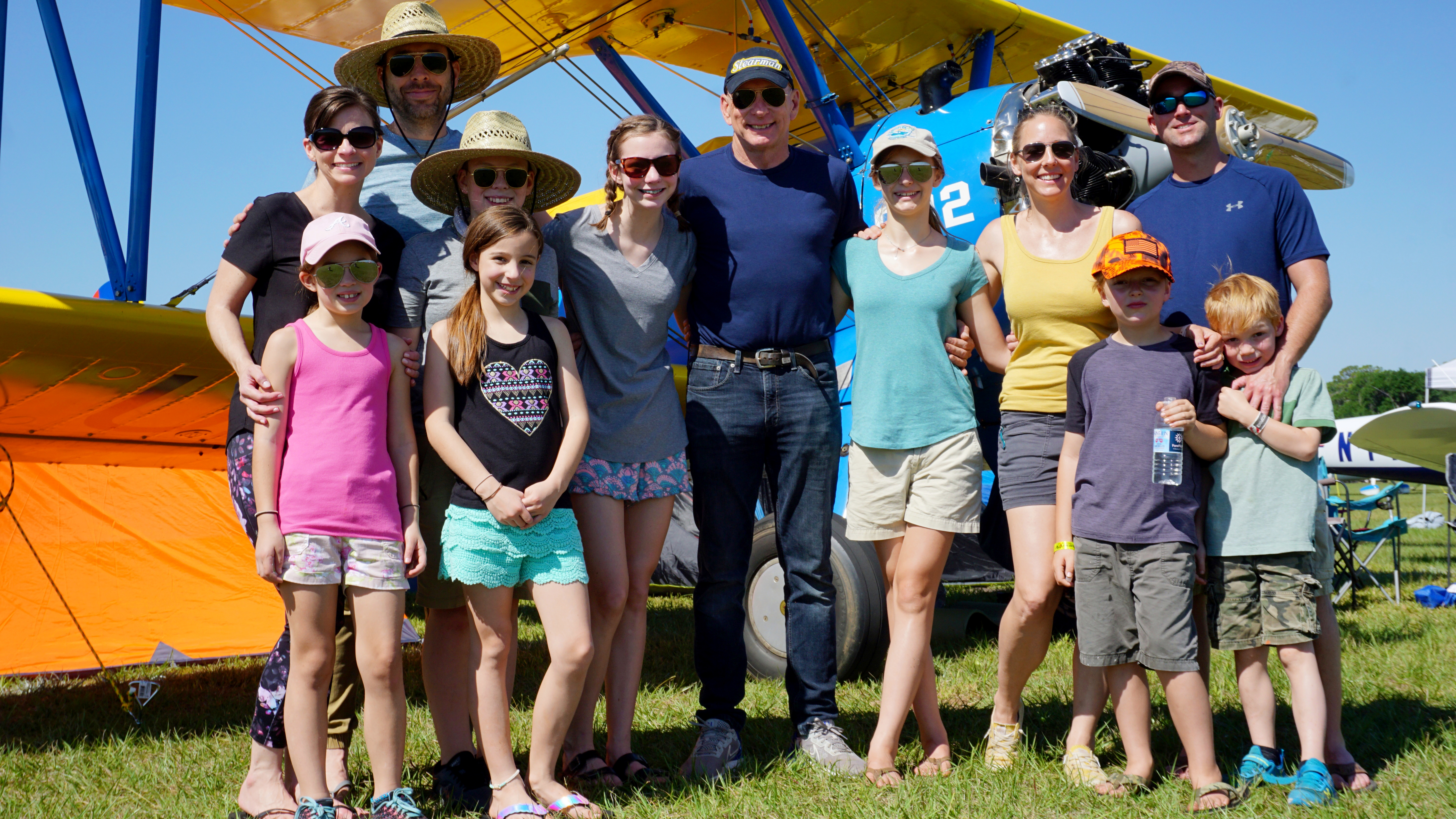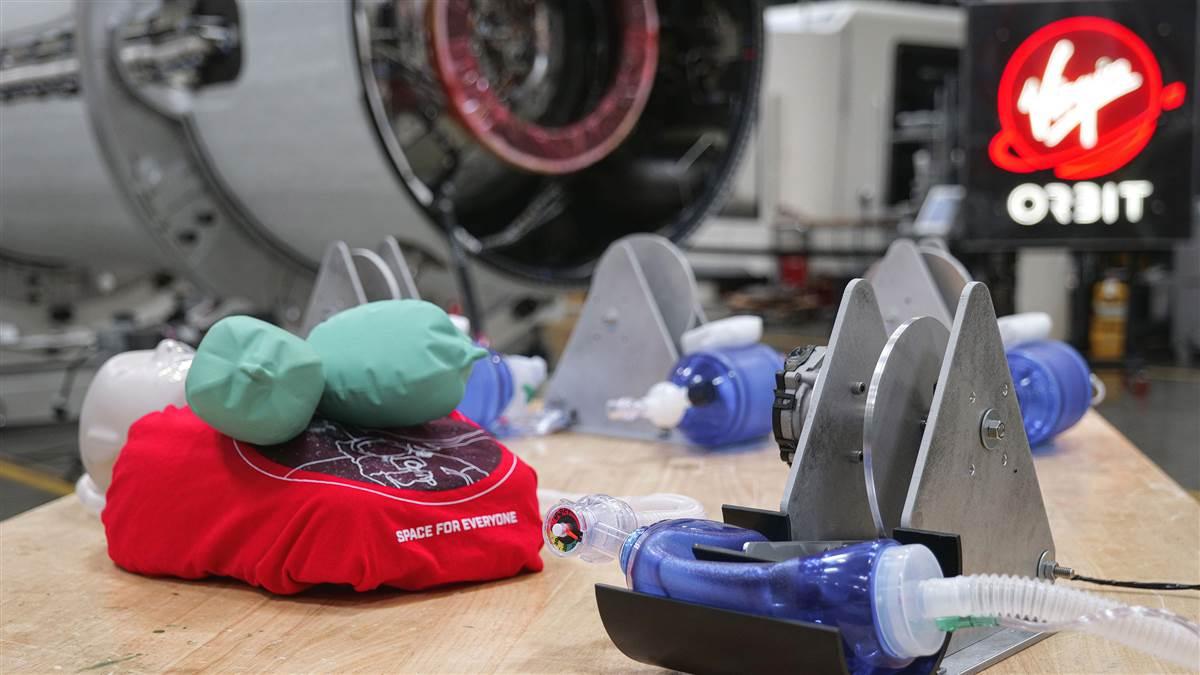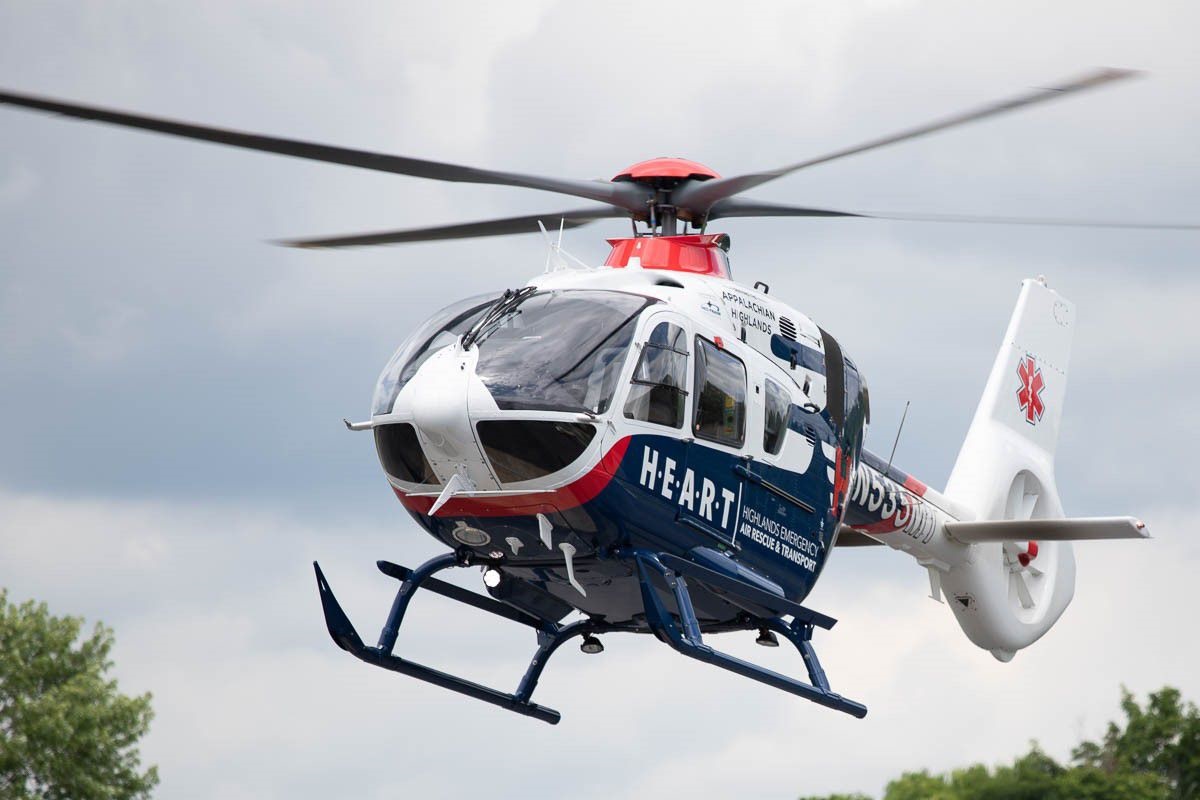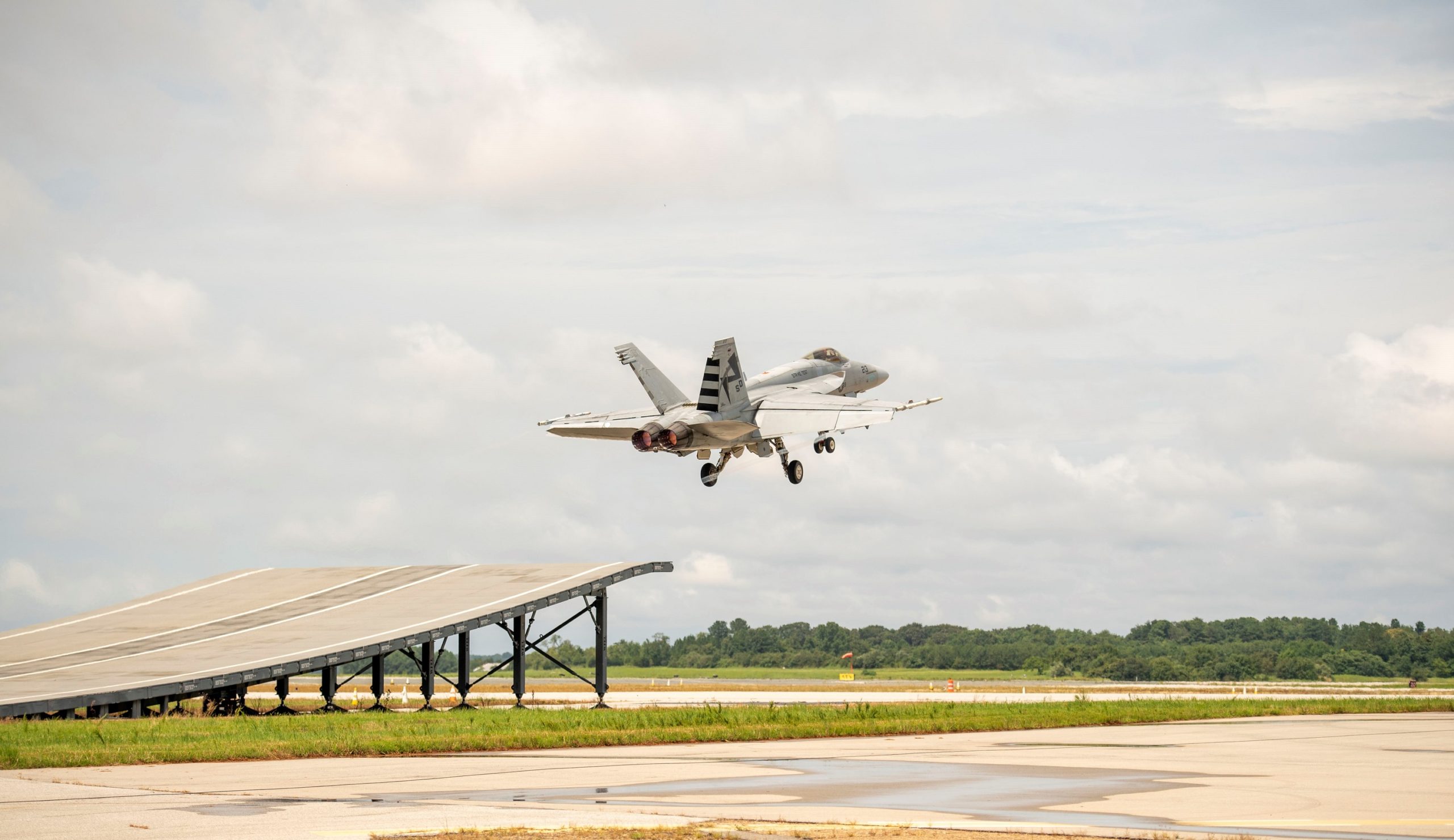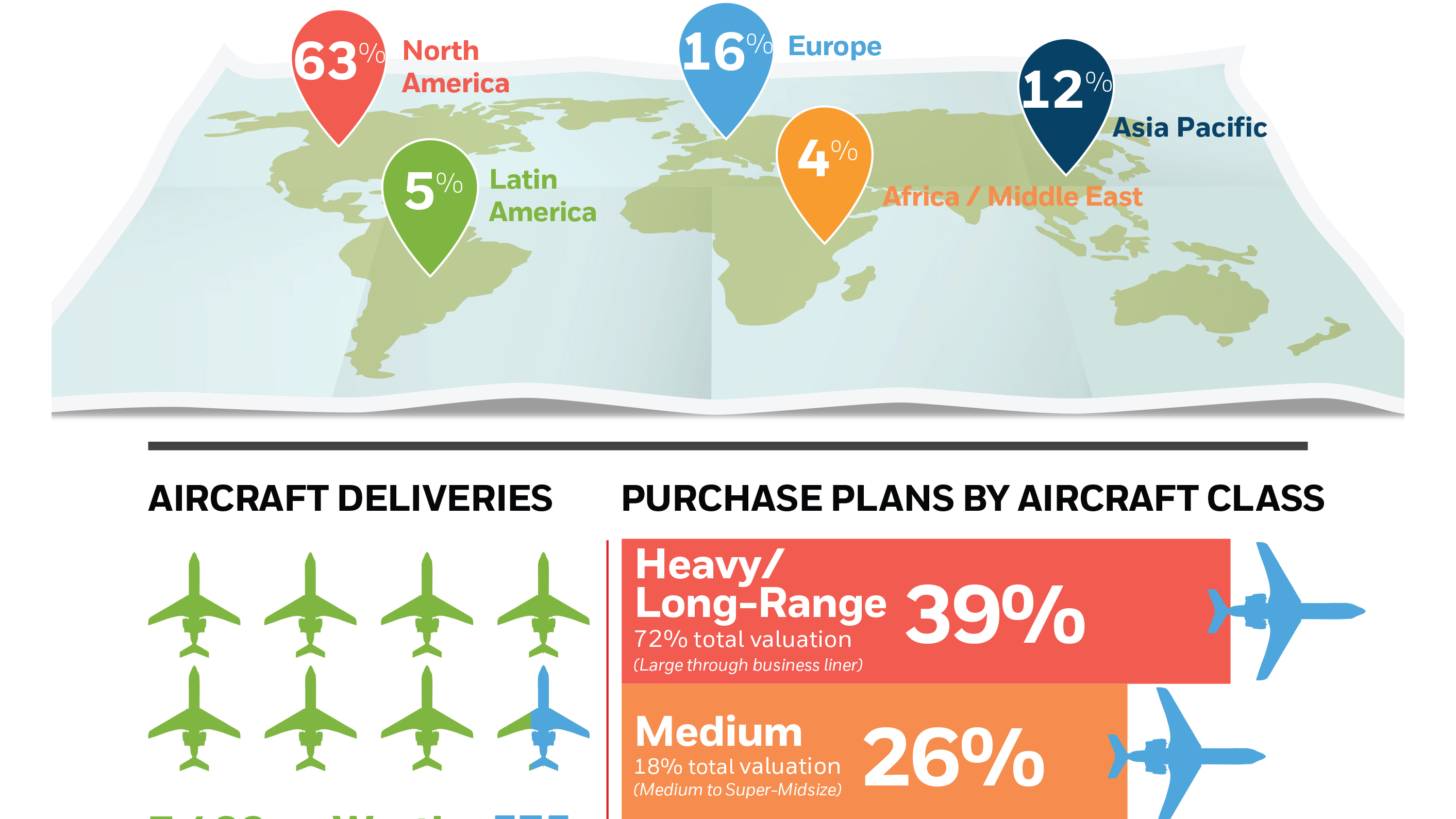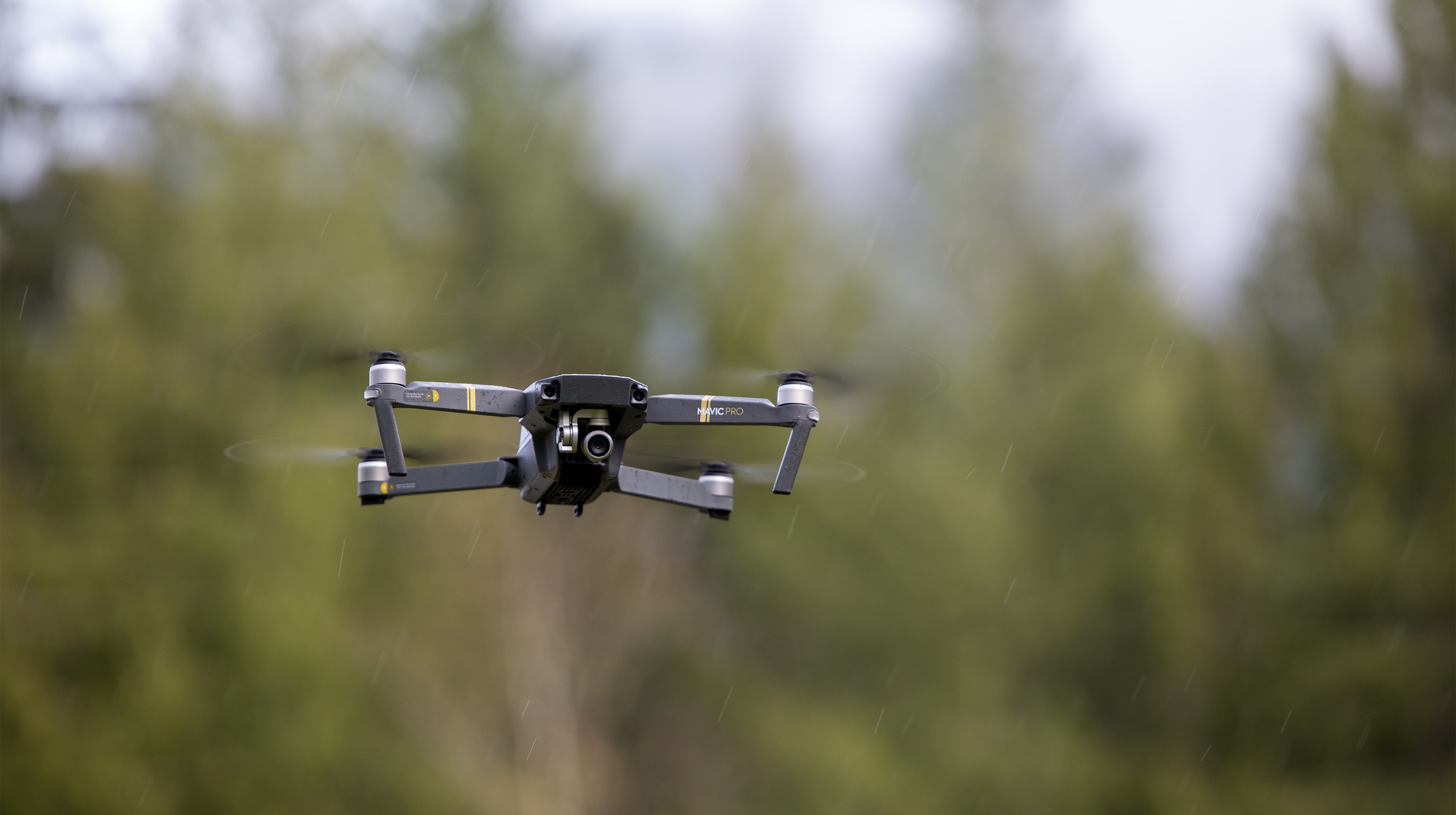Bombardier Global
Bombardier Global user+1@localho… Tue, 10/18/2022 - 22:17 Bombardier’s Global series of long-range and large-cabin business jets encompasses three different types—the BD-700-1A10, -1A11 and -2A12—with those types marketed under a number of...
Bombardier’s Global series of long-range and large-cabin business jets encompasses three different types—the BD-700-1A10, -1A11 and -2A12—with those types marketed under a number of different commercial designations. The first in the series, the BD-700-1A10-based Global Express, was launched in December 1993 and is a clean-sheet design that made its first flight on Oct. 13, 1996, a flight performed by prototype airframe MSN 9001 that was registered as C-FBGX. Following the completion of a flight-test program that included more than 2,200 hr., the Global Express was certified by Transport Canada in July 1998. An updated version of the BD-700-1A10, marketed as the Global Express XRS, was launched on Oct. 6, 2003, with that airframe featuring improvements in avionics, the cabin and performance. A little over a year later, on Jan. 16, 2005, the XRS made its first flight from Toronto Downsview Airport, which lasted 4 hr. 4 min. and was performed by airframe MSN 9159 that was registered as C-FCOI. Subsequent to its certification, the first XRS airframe was delivered in November 2005, with the European launch customer—Russian oil transportation company Transneft—accepting their first delivery (of the second airframe) on Dec. 6, 2005.
The first commercial designation for the BD-700-1A11 type, the Global 5000, was launched in February 2002, with that airframe making its first flight from Downsview on March 7, 2003. Despite the fact that it is based on a different type, Bombardier noted at the time of its first flight that the Global 5000 is based on the Global Express platform, with the notable differences between those airframes including their respective dimensions, maximum weights and range. The first flight of the Global 5000, performed by airframe MSN 9127 and registered as C-GERS, lasted 3 hr. 44 min. Following its certification in March 2004, the first delivery was made to a customer in the Middle East in April 2005.
Prior to the start of the 2011 European Business Aviation Convention and Exhibition (EBACE), Bombardier announced that the current commercial designation for the BD-700-1A10 type—which at the time was marketed as the Global Express XRS—would change to the Global 6000, with the company stating that all airframes marketed under the latter commercial designation would be equipped with the company’s Vision flight deck.
Other commercial designations for the BD-700-1A11 and -1A10 include the Global 5500 and 6500, respectively, airframes that were launched on May 27, 2018, just prior to that year’s EBACE. Representing upgrades to the existing Global 5000 and 6000, the changes made include updated engines in the form of Rolls-Royce’s Pearl 15 and a re-profiled wing trailing edge. The improvements made to the Global 5500 and 6500 gave those airframes increased speed and performance, while also providing operating costs that are comparable to other airplanes in their class. In contrast to the more than six years that elapsed between the launch and first flight of what is now known as the Global 7500, the Global 5500 and 6500 were not announced until after the latter airframe had performed its first flight. That flight took place on Jan. 31, 2018, while the Global 5500 made its first flight in July 2018. Following the certification of both airframes in August 2019, Bombardier announced the Global 6500’s entry into service on Oct. 1, 2019.
The Global 7500 was launched along with the Global 8000 on Oct. 16, 2010, with the former airframe initially marketed as the Global 7000. Subsequently, the then-Global 7000 made its first flight from Downsview on Nov. 4, 2016, performed by flight-test vehicle (FTV) 1—serial no. 70001 and registered as C-GLBO—lasting 2 hr. 27 min. When they were launched, the Global 7000 and 8000 were expected to enter service in 2016 and 2017, respectively; however, it was not until September 2018 that the Global 7500, which is the only current commercial designation for the BD-700-2A12 type, was certified by Transport Canada. Prior to certification, the change in the commercial designation from Global 7000 to 7500 was announced on May 28, 2018, a change that was made, according to Bombardier, because the airframe had exceeded its expected performance figures. Another benefit of the change in commercial designation is that it more closely aligns with the Global 5500 and 6500 commercial designations. With respect to the Global 8000, despite the fact that Bombardier originally planned for it to enter service in 2017, the company has not released updated information on its development, including when it is expected to make its first flight or enter service.
While Bombardier previously announced an airframe that was to use the Global 8000 commercial designation—an airplane which would have been a shortened version of the Global 7500 that had greater range—the company announced on May 23, 2022, the development of an upgraded Global 7500 that would use that designation instead. When it was announced at the 2022 EBACE, it was expected that the Global 8000 would enter service in 2025, with the development of the airplane at that time described as being “ongoing.”
In spite of the fact that these airframes are part of the same product line, there are a number of characteristics that distinguish them, including equipped engines, maximum weights, performance and type they are based on. With reference to the former, the Global Express, Global Express XRS, Global 5000 and Global 6000 are powered by a variant of Rolls-Royce’s BR710, while the certified engine for the Global 5500 and 6500 is Rolls-Royce’s Pearl 15 engine. In contrast to those Rolls-Royce-powered types, the Global 7500 and 8000 are equipped with—or planned to be equipped with—General Electric’s (GE) Passport series of engines. Regardless of any differences, the common type certificate for all three types is held by Bombardier, Inc. of Montreal, Quebec.
|
BD-700-1A10 Variant |
Transport Canada Certification Date |
|
Global Express |
July 31, 1998 |
|
Global Express XRS |
|
|
Global 6000 |
Dec. 12, 2011 |
|
Global 6500 |
Aug. 26, 2019 |
|
BD-700-1A11 Variant |
Transport Canada Certification Date |
|
Global 5000 |
March 12, 2004 |
|
Global 5500 |
Aug. 26, 2019 |
|
BD-700-2A12 Variant |
Transport Canada Certification Date |
|
Global 7500 |
Sept. 27, 2018 |
Cabin and Baggage Capacity
Despite differences in fuselage length, all Global Express and Global airframes based on the BD-700-1A10, -1A11 and -2A12 types have a maximum capacity of 19 passengers and three crew members, including the two required pilots. The cabins of both the Global Express and the Global Express XRS are divided into three compartments, with the XRS promoted as having a stand-up height of 6 ft. 3 in. When Bombardier announced that the XRS had entered service, it promoted the airframe’s cabin as giving operators “28% more cabin volume and 45% more floor space than its closest competitor.” The changes that were made to the cabin of the XRS increased the amount of usable space and light, while also improving the pressurization so that the cabin altitude at flight level (FL) 450 is 4,500 ft. and 5,700 ft. at FL510. Cabin lighting is improved thanks to the addition of two windows and light-emitted diode (LED) technology that is installed in the cabin. Also made available in the XRS’ cabin is a crew rest area located on the forward right side of the cabin, with that feature promoted as allowing operators to fly non-stop flights of “up to 12 hr.”
When compared to the BD-700-1A10-based Global Express and Global Express XRS, the Global 5000—which is one of the commercial designations for the BD-700-1A11 type—is noted as having the same fuselage cross-section, with the floor-level and maximum cross sections being 6.9 ft. and 8.2 ft., respectively. As would be expected based on fuselage length—which is 31 in. shorter than the Global Express—the cabin length is also shorter by the same amount. However, despite the shortening of the Global 5000, “the main passenger seating section essentially is the same length, width and height as the Global Express.” The 32-in. reduction in cabin length comes from the forward compartment and aft lavatory, which are truncated by 26 in. and 6 in., respectively. In comparison to the pressurization systems and cabin altitudes able to be maintained by the Global Express, Global Express XRS and Global 6000, the Global 5000’s pressurization system can maintain the cabin altitude “at or below 7,350 ft. up to FL510.” In addition to providing cabin pressurization, the engine inlet and wing leading edge anti-ice features also utilize the bleed-air system.
Although the Global 5000 and 6000 are based on different types and were certified more than seven years apart, they are marketed by Bombardier as having a number of cabin features in common, including the size of the cabin—with respect to each airframe’s market segment—the type of connectivity available and type of living areas in the cabin and various other cabin features. When compared to other airplanes in its class, both the Global 5000 and 6000 are promoted as having the “widest cabin in class with more room than its nearest competitor.” These variants of the Global series also offer Ka-band internet connectivity that is marketed as offering speeds of “up to 15 MBps”—which is five times faster than “legacy air-to-ground systems”—with that level of connectivity allowing live streaming, online gaming and video conferencing. Passengers have access to entertainment features that include 24-in. high-definition monitors that are located on the forward and aft bulkheads, with the ability to wirelessly stream music and watch movies, as well as live stream video. Control of the cabin media and other cabin characteristics by passengers is enabled by an app that controls the cabin management system, while the cabin pressurization noted above for the XRS is the same for Global 6000 and is provided by a 10.3-psi pressurization system.
The cabins of both the Global 5000 and 6000 are divided into three separate areas, with the forward portion of the cabins having a galley, lavatory and wardrobe. The galley—which is located between the cockpit and passenger seating areas—can feature chilled storage, a coffee/espresso machine, ice drawer that is drainable, microwave, oven and a sink and faucet. Although both the BD-700-1A10 and -1A11 types have the same maximum passenger capacity, Bombardier markets the Global 5000 as having a passenger capacity of up to 16 passengers, with the Global 6000 increasing that figure to 17. A number of floorplans are available for both airframes, with the passenger seating accommodations including club-configuration executive seating, a four-seat conference grouping and a berthable three-place divan. Available in the aft portion of both cabins is a stateroom that features a berthable divan, a lavatory—which can be equipped with a shower—and a wardrobe, as well as independent temperature controls. Despite those shared characteristics, because the fuselages of the BD-700-1A10 and -1A11 differ in length by 31 in., the cabin sizes of the Global 5000 and 6000 also differ by 30 in. (40 ft. 9 in. versus 43 ft. 3 in.). Regardless of the differences in the size of the cabins, both airplanes are equipped with a baggage compartment that has a volume of 195 ft.3, a characteristic that is shared by the Global 5500, 7500 and 8000. Additional distinctions between the Global 5000 and 6000 include a crew-rest area, which is “equipped with [a] berthable seat, power outlets and storage” and promoted as increasing the “operational reach” of the Global 6000.
The Global 5500’s cabin is also promoted as being the widest cabin in its class, while incorporating Bombardier’s new Nuage seat. That cabin has a width of 7 ft. 11 in., a height of 6 ft. 2 in. and a length of 40 ft. 9 in., with the latter measured from the cockpit divider to the aft-most cabin excluding of the baggage compartment. The Nuage seat—which will also be included on the Global 6500 and 7500, as well as the Global 5500—is promoted as representing “the first meaningful change in the operation and design of a business aircraft seat in 30 years.” The features of that seat, which is unique to the Global aircraft family, include a floating base, fully trackless footprint, “an adjustable and tilting headrest” and a tilt-link system. The cabin itself is divided into three distinct living spaces—the club, conference and private suites—with the former area having features that include a 24-in. 4K bulkhead monitor with surround sound, concealable side tables, four Nuage seats, a cabin entry door that is sound insulating and “quick-access in-seat storage.” Aft of the club suite, in the center portion of the cabin, is the conference suite, a living space for which multiple floorplans and a chaise are available. That section of the cabin also has quick-access in-seat storage, a conference grouping of seats that surrounds a “height-adjustable single-pedestal table” and a credenza with additional storage space. In the aft portion of the cabin is the private suite and its en suite, the latter of which features a lavatory and wardrobe, with the lavatory itself including a faucet, large mirror, sink and vanity. Beyond those features, the en suite also provides access to the airframe’s baggage compartment.
Supplementing the three living areas, the forward portion of the Global 5500 and 6500’s cabin includes a kitchen—which has chilled storage, a drawer, sink and faucet and work surface—as well as an additional lavatory and wardrobe. As is the case with the Global 5000 and 6000, passenger connectivity on the updated versions of those airframes is provided by the available Ka-band high-speed in-flight internet, while passenger entertainment comes in the form of the Cabin Entertainment Suite—which is 4K/ultra-high-definition (UHD) capable—and “wireless music streaming capability throughout the cabin.” Indeed, the “ability to distribute 4K content through the aircraft” is noted as being a “first-to-market feature.” The cabin management and entertainment system installed on these airframes is Collins Aerospace’s Venue system, which can be controlled from each passenger’s personal electronic devices.
In addition to being touted as having the widest cabin in its class—it shares the same width and height of the Global 5500—the Global 6500’s cabin is also promoted for the width of its seats. As with the Global 5000, 5500 and 6000, the Global 6500’s kitchen is located forward in the cabin and features “new cabinets and countertops coupled with high-end exposed appliances, including a steam oven,” as well as “exposed dual convection/microwave ovens and [a] premium coffee/espresso machine.” Another aspect of the Global 6500 that is located in the forward part of the cabin is its crew-rest area, which has the same amenities as the previously mentioned rest area on the Global 6000. With the exception of an optional standup shower—promoted as being the first business jet to offer such a shower—the outfitting of the Global 6500’s three living areas, as well as its entertainment and connectivity options, are marketed as being very similar to those of the Global 5500. For example, the Nuage chaise that is available in the conference suites of both airframes is able to function as a lounge chair or flat surface, the latter of which can be used for sleeping or additional seating. From a cabin dimension standpoint, while the Global 5500 and 6500 have common cabin widths and heights, the latter airframe’s 43-ft. 3-in. cabin is 2 ft. 6 in. longer, consistent with the difference in the airframe’s fuselage lengths.
In common with the Global 5500 and 6500, the Global 7500 and 8000 feature Bombardier’s Nuage seat, while also retaining a number of aspects specific to the Global 6500, such as the crew area in the forward part of the cabin. The height and width of the Global 7500 cabin—at 6 ft. 2 in. and 8 ft., respectively—is nearly the same as that of the previous variants of the BD-700-1A10 and -1A11 types, while the cabin length, at 54 ft. 5 in., is more than 11 ft. longer than the former type. That additional length allows for the inclusion of an additional living area—the entertainment suite—an extra suite that makes the Global 7500 the “only business jet with four living spaces.” The features of that fourth living space—with the other living spaces being the previously mentioned club, conference and private suites—include an audio system, an entertainment cabinet that is both large and which features media storage, a large-screen high-definition (HD) TV, six large windows and a three-place berthable divan. Located aft of the entertainment suite, the Global 7500’s private suite also has a three-place berthable divan, a single Nuage seat—in comparison to the two that are available on the Global 5500 and 6500—and an en suite that is able to be fitted with a stand-up shower. Beyond the en suite’s other features, it also provides access to the airframe’s 195-ft.3 baggage compartment, while a permanent bed is also an option for the private suite. In the forward portion of the cabin is a crew suite that is private, has power outlets and storage and which also features a seat that is berthable, while the galley includes a coffee/espresso machine.
Because it is simply an upgraded Global 7500, the Global 8000 retains the same cabin dimensions, incorporates much of the same outfitting and has the ability to be divided into four separate living areas. In the “typical interior configuration,” the Global 8000’s living areas—the club, conference, entertainment and principal suites—are described are being “equal size” and have many of the same features as the Global 7500. In the forward cabin, features that are retained from the Global 7500 include a lavatory that has a faucet, sink, vanity and window; a kitchen that is marketed as being the largest in the industry and a wardrobe that is available to store the “personal items” of crew and passengers. According to Bombardier, the kitchens of the Global 7500 and 8000 have chilled storage, dual convection/microwave ovens and a sink and faucet. As is found on the Global 5500 and 6500, the club suites of the largest Global-series airplanes include four Nuage seats, side tables that are concealable and a high-definition TV that measures 24 in.
In contrast to the commonalities found across the Global 5500, 6500, 7500 and 8000, the conference suite living area found on the latter pair of airframes differs from the former pair in several ways, including through the inclusion of a dining and meeting space that seats six. Additionally, while the conference suites of both the Global 7500 and 8000 are equipped with a side table is concealable and a dining table that has a “removable leaf,” the former is noted as also having a high-definition TV in that living area that is wall-mounted and large. As advertised by Bombardier, the Global 8000’s entertainment suite retains most of the outfitting as the same living area on the airframe it is derived from, including a media cabinet and high-definition TV that are promoted for their size, as well as a berthable divan which has three places.
Near the entrance to the Global 8000’s cabin is private crew suite that is a “permanently accessible” and which incorporates the Nuage seat. Aft of the entrance, while the club suite is equipped in largely the same way as the Global 7500, the four Nuages seats that are found in that section of the Global 8000 are noted as having a “zero-gravity position.” In a typical interior configuration, the principal suite features a high-definition display that measures 32 in., a bed that is “full size with [a] customizable headboard,” a Nuage seat that has a “zero-gravity position,” a side table that is concealable and a wardrobe that is promoted for its large size. In the aft part of the cabin is an en suite that incorporates the same outfitting as the Global 7500, while also providing access to the baggage compartment that is safe and unrestricted. Additionally, the Global 8000’s 2,900-ft. cabin altitude at 41,000 ft. is described as being the “industry’s lowest.”
A technology that was specifically designed for the Global 7500 and 8000 is the nice Touch cabin management system (CMS), a system that also introduced the Bombardier Touch dial. The nice Touch CMS can be controlled by the Bombardier Touch dial—which is the first organic light-emitting diode (OLED) display certified for business aviation—suite controllers that are located in each living space and the nice Touch app, the latter of which gives passengers access to an array of cabin, connectivity and entertainment settings. Additionally, the touch-screen suite controllers allow the lighting, sound and temperature of each living space to be controlled. As is common to other Global airframes, passenger connectivity for both the Global 7500 and 8000 is provided in the form of Ka-band internet.
The passenger-entertainment features of both of the larger Global airframes can include a “4K home theater experience” which incorporates speakers that are promoted as having the “industry’s highest fidelity” and a 4K display that measures 40 in., with this feature also enabled by a media center that is “comprehensive” and a “high-speed fiber optic backbone.” Entertainment on the Global 7500 and 8000 can be further enhanced through Bombardier’s l’Opera audio system that is promoted as being the first audio system in the industry to include advanced digital signal processing, “full-range speakers” and sound technology that is seat-centric. Those full-range speakers include “deep-bass subwoofers,” “mid-to-high-range drivers” that have “advanced passive technology” and “a surround-sound center channel speaker.” The “seat-centric sound technology” is noted as “creating” an audio field that is immersive and “optimally positioned at ear level throughout the cabin,” while the advanced digit signal processing of the l’Opera audio system includes class-D amplifiers that produce 1,275 watts and have benefits in frequency range and the integrity of the signal.
The comfort of the Global 7500 and 8000’s passengers is increased by the Bombardier Pur Air air-purification and circulation system, a system that incorporates an “advanced HEPA [high-efficiency particulate air] filter” that quickly “purifies and replaces cabin air.” Exclusive to the Global series of airplanes, other benefits of this air purification system include cabin cooling and heating that is faster, as well as providing air that has “better humidity.” Through the incorporation of a HEPA filter, the air is cleaned by “capturing up to 99.99% of particles from the air passing through it,” with Bombardier describing that feature as being one that “100% fresh-air systems” generally do not have. Beyond removing allergens, bacteria and viruses, the air-purification system’s activated carbon filter also removes gases, odors and volatile organic compounds. Specific particles that the system “is up to 99% effective at capturing” include avian flu, carbon dioxide (CO2) emissions, coronavirus, human hair, mold, spores and swine flu. As is noted above, another benefit of the Global 7500 and 8000’s air-purification system is its ability to cool and heat the cabin, a capability that is marketed as being “twice as fast as an aircraft using a 100% fresh-air only setting.” When compared to such system, the airframe manufacturer states that the “Pur Air [system’s] filtered air recirculation feature was able to achieve the desired cabin temperature in half the time.” Also improved in comparison to 100% fresh-air-only systems is the preservation of cabin humidity, which is noted as having a number of health benefits. With the ability to refresh the cabin entirely in “as little as 90 seconds,” the Pur Air system is promoted as having the quickest “fresh air delivery system in the industry,” one that is further described as being as much as 25% quicker “than the competition.”
A passenger-comfort feature that is exclusive to the Global 7500 and 8000 is the Soleil cabin lighting system, a circadian rhythm-based system that is “fully integrated” into the flight management system (FMS) and which is described as being “aviation’s first” such system. Bombardier states that another first of the Soleil system is its Dynamic Daylight Simulation, which aids in the “combat[ing] of jet lag.” The Soleil system is further described as adjusting the cabin lighting automatically in order “to aid in stimulating or suppressing the production of melatonin, which can help synchronize a traveler’s circadian rhythm to the time at their destination.” In addition to Dynamic Daylight Simulation, the Solei system also has a number of other “lighting presets,” such as a “natural lighting preset [that] recreates a host of daylight conditions” such as “early morning, dawn, mid-day, afternoon and evening lighting.” Also available are dynamic lighting presets which “recreate the subtle movement of” clouds or sun, while also having presets that are able to “create the illusion of clouds moving in the sky.” Furthermore, the Solei provides a number of mood lighting presets that are meant to create “cabin ambiance for” activities such as dining, listening to music, meditation, reading, relaxation, watching a movie or working, while also having the ability to display an “array of custom color selections.” Controlling the Soleil lighting system is the nice Touch CMS, with the previously noted means of controlling the CMS also applicable to the Soleil lighting system.
Avionics
Prior to the approval of the Vision flight deck, the Global Express, Global Express XRS and Global 5000 were equipped with Honeywell’s Primus 2000XP avionics that featured cathode-ray tube (CRT) displays that measure 6 X 8 X 7 in. When it was announced, the standard avionics equipment of the Global Express XRS included the Bombardier Enhanced Vision System (BEVS), a system that incorporates the SureSight I-series second-generation enhanced vision system (EVS) sensor. That EVS sensor, which was provided by CMC Electronics, was integrated into a head-up display (HUD) provided by Thales Avionics. Bombardier says the benefits of the BEVS include an increase in “overall depth perception in difficult operating conditions and/or at unfamiliar airports,” as well as reductions in the risk from a number of hazards such as controlled flight into terrain (CFIT), low-visibility conditions and runway incursions when operating at night. On May 4, 2010, Bombardier announced that it had received a supplemental type certificate (STC) for an upgraded flight deck based on the Honeywell Primus Elite flight deck which allowed the installation of Primus Elite DU-875 liquid crystal display (LCD) upgrades. The upgrade enabled by the STC was an option on newly produced and in-service airframes, with the upgraded displays capable of displaying Honeywell’s SmartView synthetic vision system (SVS).
A feature common to Global airframes subsequent to the Global Express XRS—as well as Global 5000 airframes manufactured after a certain date—is the Vision flight deck, an avionics suite based on Collins Aerospace’s Pro Line Fusion avionics and that was unveiled in September 2007. The first flight of a Vision-equipped airframe—an XRS—took place on Aug. 3, 2009, from Downsview, with the Vision being certified by Transport Canada for both the BD-700-1A10 and -1A11 on June 3, 2011. At the time of that first flight, Bombardier planned for the Vision to be available on the Global 5000 and XRS.
Collins states that the “baseline” features of the Vision installation on the Global 5000 and 6000 include four 15-in. LCDs, controller-pilot datalink communication (CPDLC), future air navigation system (FANS/1A) capability, graphical flight planning, HUD, high-speed satellite communications (satcom), an integrated flight information system (IFIS), MultiScan weather radar, performance-based navigation (PBN) capabilities, EVS and SVS, triple FMS and very-high-frequency (VHF) communication radios. The HUD on the Global 5000 and 6000 is Collins Aerospace’s HGS-6000 system that has the capability to display both EVS and SVS. According to Collins Aerospace, the “key options” of the Vision flight deck on these Global airframes include automatic dependent surveillance – broadcast (ADS-B) Out capability, aeronautical telecommunication navigation (Link 2000+), dual XM Satellite Weather and data-link graphical weather, Surface Management System 5000, a second datalink and SVS, a third IFIS and steep-approach capability.
With regard to the baseline components of Vision flight deck, equipped airframes have the ability to utilize satellite-based augmentation systems (SBAS) such as the FAA’s wide-area augmentation system (WAAS) to conduct approach procedures such as localizer performance with vertical guidance (LPV), while also being able to perform required navigational performance authorization required (RNP AR) 0.3-nm approaches. In addition to having the capability to perform those types of approaches, en route RNP navigation is also possible. Described by Collins as being the “first business aircraft to equip SVS on [the company’s] Head-Up Guidance System (HGS),” the combination of those two systems is marketed as the Head-Up Vision System (HVS). The benefits of that combination—which shows the SVS image “on both the primary flight display and [HUD]”—are promoted as improving pilot situational awareness in low-visibility conditions or during approaches to an unfamiliar airport with surrounding terrain. The SVS’ multiple databases are integrated along with “real-time flight information,” with the system described as showing pilots “a lifelike image of” the landscape, obstacles and water. The Vision’s SVS is further marketed as “creat[ing] a virtual visual meteorological conditions (VMC) environment” through its addition of an airport dome, distinct mile markers, lead-ins and runway highlights. As is the case with the SVS, the Vision’s EVS—with its ability to increase pilot’s situational awareness with respect to obstacles and terrain—is noted as being of particular value in low-visibility conditions such as those found in fog, at night or in rain. In such conditions, the EVS can display runways and taxiways, obstacles on and around the runway such as deer and highways adjacent to the airport.
The MultiScan weather radar can display weather up to 320 nm in front of an airplane and detect turbulence up to 40 nm away, while also having “OverFlight” protection that reduces “the risk of inadvertently penetrating thunderstorm tops.” The standard FANS 1/A capability is another feature that Collins promotes as reducing pilot workload, specifically when operating on preferred North Atlantic tracks and using the U.S.’ Departure Clearance (DCL) service, with the latter system providing a number benefits with regard to pilot-controller communication and air traffic system efficiency. The IFIS provides pilots with electronic charts, current weather that is displayed on the multifunction display, “enhanced map overlays” and a “document reader for on-board electronic flight manuals.” On the Global 6000, a pair of 8.4-in. electronic flight bags (EFB) are standard and include aircraft flight manuals, backup electronic charts and secondary cabin management controls.
According to Collins, in addition to being ADS-B Out capable, other avionics options that are available for the Global 5000 and 6000 include the Link 2000+ telecommunication network that is described as making pilot-ATC communications easier and “more reliable.” The optional Surface Management System feature of the Vision flight deck provides pilots with aural and visual alerts during both takeoff and landing. Promoted by Collins as “reducing the risk of runway incursions or confusion at complex destinations,” the alerts provided by the system notify pilots of unsafe arrival and ground operations. The available dual XM Satellite Weather and data-link weather are described as supplementing the airframes’ on-board radar system though the ability to be overlaid on the navigational map, giving pilots better awareness of their route and potential weather. Collins also notes that the Pro Line Fusion can allow these Global airframes to “land at airports with approach profiles [that require] up to a 5.5-deg. glide slope,” including those in or near city centers, as well as in mountainous terrain.
The Vision installation on the Global 5500, 6500, 7500 and 8000 includes many of the same features as Vision-equipped Global 5000 and 6000s, including four large displays, a HUD, graphical flight planning, MultiScan weather radar and PBN navigational and CPDLC capabilities. As is the case with the Global 5000 and 6000, the navigational capabilities that are common to these more recent Global airframes include the ability to conduct LPV and RNP AR approaches, while also having the capability to use RNP during the en route phase of flight. Bombardier also states that the MultiScan radar which is installed on the Global 7500 and 8000 has windshear-detection technology, while the pilots of those Global-series airframes fly using side-side controls. Those airplanes also incorporate Bombardier’s fly-by-wire system that is described as being “engineered” so that safety is maximized “through a balanced design that combines control input freedom” with flight-envelope protection that is described as being the “most complete” in the industry.
In addition to the avionics differences between the Global 5000/6000 and Global 5500/6500/7500/8000, a number of differences also exist within the Vision installations of those latter commercial variants of the BD-700-1A10, -1A11 and -2A12. Those differences include whether a Combined Vision System (CVS) is available—which is the case for the Global 5500 and 6500—or, as is installed on the Global 7500 and 8000, an EVS and SVS. As the name implies, the CVS installed on the Global 5500 and 6500 combines the “enhanced and synthetic images in a single view,” with those airframes promoted as being the first to offer such a system. As with a number of other avionics features, the operational and safety benefits of the CVS technology, which is also provided by Collins Aerospace, include improved situational awareness—such as when flying through weather—and reductions in pilot workload. Additionally, the “precise decluttering of the runway and approach lighting areas” is noted by Bombardier as improving pilot decision-making, with no need for pilots to manually change the system when operating in changing conditions. From a functional standpoint, the Global 5500 and 6500’s SVS gives pilots “digital imagery of the surrounding environment [that is] unaffected by weather or visibility conditions,” including buildings, landforms, obstacles, fixed-distance markers and the extended centerline of runways. In contrast to the digital imagery provided by the SVS, the EVS component of the CVS displays infrared images—in real-time and during all phases of flight—with those images including other aircraft as well as obstacles such as animals and vehicles. Additionally, the EVS is promoted as providing pilots with an increased ability to see “approach and runway cues through” haze, mist, smog and smoke. Collins notes that the imagery from the CVS “is projected on the [HUD] creating an augmented-reality system.” Also incorporated into the Global 5500 and 6500’s avionics are an airport moving map and high-speed satcom.
Mission and Performance
Alongside the Global Express and Global Express XRS, the Global 5000, 5500, 6000, 6500, 7500 and 8000 comprise Bombardier’s family of large-cabin, long-range business jets. From a competitive perspective, the first-generation Global Express airframe was meant to compete with Gulfstream’s G-V airframe. When it was launched in 2002, the Global 5000 was designed to fill the gap between Bombardier’s Challenger 604 and the Global Express, while also competing with business jets such as included Dassault’s Falcon 900EX and Gulfstream’s G450/G550. Additional comparisons between the Global 5000, 5500, 6000, 6500 and 7500 and comparable Gulfstream airframes are listed below.
|
Comparison: Bombardier Global 5000/5500 and Gulfstream G500/G600 |
|||||
|
|
Global 5000 |
Global 5500 |
G500 |
G600 |
|
|
Maximum Certified Passenger Capacity |
19 |
||||
|
Maximum Range (nm) |
5,200 |
5,900 |
5,300 |
6,600 |
|
|
Engine |
Rolls-Royce |
Pratt & Whitney Canada |
|||
|
BR700-710A2-20 |
BR700-710D5-21 (Pearl 15) |
PW814GA |
PW815GA |
||
|
Maximum Takeoff Weight (MTOW)(lb.) |
92,500 |
79,600 |
94,600 |
||
|
Wingspan |
94 ft. |
86 ft. 4 in. |
94 ft. 2 in. |
||
|
Length |
96 ft. 10 in. |
91 ft. 2 in. |
96 ft. 1 in. |
||
|
Height |
25 ft. 6 in. |
25 ft. 6 in. |
25 ft. 3 in. |
||
|
Comparison: Bombardier Global 6000/6500 and Gulfstream G650/G650ER Specifications |
|||||
|
|
Global 6000 |
Global 6500 |
G650 |
G650ER |
|
|
Maximum Certified Passenger Capacity |
19 |
||||
|
Maximum Range (nm) |
6,000 |
6,600 |
7,000 |
7,500 |
|
|
Engine |
Rolls-Royce |
||||
|
BR700-710A2-20 |
BR700-710D5-21 (Pearl 15) |
BR700-725A1-12 |
|||
|
Maximum Takeoff Weight (MTOW)(lb.) |
99,500 |
99,600 |
103,600 |
||
|
Wingspan |
94 ft. |
99 ft. 7 in. |
|||
|
Length |
99 ft. 5 in. |
99 ft. 9 in. |
|||
|
Height |
25 ft. 6 in. |
25 ft. 8 in. |
|||
|
Comparison: Global 7500/8000 and Gulfstream G700/G800 |
|||||
|
|
Global 7500 |
Global 8000 |
G700 |
G800 |
|
|
Maximum Certified Passenger Capacity |
19 |
||||
|
Maximum Range (nm) |
7,700 |
8,000 |
7,500 |
8,000 |
|
|
Engine |
General Electric |
Rolls-Royce |
|||
|
Passport 20-19BB1A |
Passport |
Pearl 700 |
|||
|
Maximum Takeoff Weight (MTOW)(lb.) |
114,850 |
|
107,600 |
105,600 |
|
|
Wingspan |
104 ft. |
103 ft. |
|||
|
Length |
111 ft. |
109 ft. 10 in. |
99 ft. 9 in. |
||
|
Height |
27 ft. |
25 ft. 5 in. |
25 ft. 6 in. |
||
Regarding performance, the types marketed as the Global Express and Global have more differences than commonalities, with their maximum operating altitude being one of the few performance limitations common to all three types. Although the maximum operating altitudes for en route and takeoff/landing—51,000 ft. and 13,700 ft., respectively—are shared by the BD-700-1A10 and -1A11 types, the initial cruise altitude is different for the Global 5000, 5500, 6000 and 6500 when compared to the Global 7500 and 8000. Based on the respective airframes’ maximum takeoff weight (MTOW), the former series of airframes are limited to an initial cruise altitude of 41,000 ft., while the latter pair increase that altitude to 43,000 ft. With respect to maximum operating altitude for the en route phase of flight, the Global 7500 has the same limitation as noted above, while the limit for the takeoff/landing phase is not published in publicly available commercial or certification documents.
Another performance limitation that is also different is the maximum operating limit speed (MMO), with the pre-Global 5500/6500 commercial designations of the BD-700-1A10 and -1A11 types having the lowest such limitation of 0.89 Mach between 30,267 ft. and 35,000 ft. From 30,850 ft. to 36,313 ft., the Global 5500 and 6500 increase that limitation to 0.90 Mach, while the Global 7500 is certified to a limit of 0.925 Mach. Although the typical cruise speed of all four airframes is 0.85 Mach, the high-speed cruise speed of Global 5000, 5500, 6000 and 6500 is promoted as being 0.88 Mach, a figure that the Global 7500 and 8000 increase to 0.90 Mach. Beyond having a high-speed cruise speed of 0.90 Mach, the Global 8000 will also have an ultra-high-speed cruise speed of 0.92 Mach and an increased MMO of 0.94 Mach, the latter of which is described by Bombardier as being business aviation’s “fastest ever.”
Aside from the Global Express and Global Express XRS, the ranges noted below are theoretical maximum ranges that assume National Business Aviation Association (NBAA) instrument flight rules (IFR) reserves, standard conditions and operating at 0.85 Mach. However, the range figures of those Global airframes are distinguished by the fact that the calculations for the Global 5000 and 5500 assume carrying eight passengers and three crew members, while the Global 6000, 6500, 7500 and 8000 assume adding a fourth crew member. In addition to having business aviation’s highest top speed, when it enters service, the Global 8000’s 8,000-nm range will also be “industry leading.”
For the commercial designations of the BD-700-1A10 and -1A11 subsequent to the Global Express and Global Express XRS, the takeoff distances—which are based on an airframe’s MTOW, sea-level altitude and standard conditions—vary between the Global 5500’s 5,490-ft. distance and the 6,476 ft. required for the Global 6000. Although they have the same MTOW as the variants that preceded them, the takeoff figures for Global 5500 and 6500 are slightly reduced in comparison to the predecessor Global 5000 and 6000, with the distance required for the 5000 being 5,540 ft., and the comparable distance for the Global 6500 being 6,370 ft. Assuming the same altitude, environmental conditions and weight, the Global 7500 and 8000 both require 5,760 ft. of runway on takeoff.
The landing distance for those variants of the Global series—based on same conditions, except for a typical landing weight—varies between 2,207 ft. for the Global 5000 and 5500 and 2,237 ft. for the Global 7500 and 8000. Although the takeoff distances for the Global 6000 and 6500 differ, the landing distances are the same 2,236 ft. Additionally, the takeoff and landing distances of the Global 7500 are improvements in comparison to the 5,950-ft. takeoff distance and 2,975-ft. landing distance that were expected from the airframe. Bombardier says those improvements were made possible because of the airframe’s wing design, with the airframe’s ability to perform steep approaches also enabled by “the low-speed aerodynamics of the wing.”
Those performance figures allow these variants of the Global line to access relatively small airfields such as London City, with the Global 7500 and 8000 described as being among the largest business airplanes capable of utilizing that city-center airport. In particular, the Global 7500 is noted as being the largest business jet capable of operating at London City. The ability of the larger Global variants to access London City is made possible by the “steep approach support” of those airframes, and, when combined with their braking ability, the Global 7500 and 8000 are promoted as having performance that “rivals that of much smaller aircraft.” Indeed, the 5,800-ft. takeoff distance of the Global 7500 is marketed by Bombardier as being “almost 500 ft. shorter than the closest, and much smaller, competitor.” With respect to the landing-performance figures of the Global 7500, the company states that they are able to rival “the stopping distance of aircraft in the light-jet category.” Beyond being able to operate from city-airports, the Global 5000 and 6000 are also noted for their ability to operate at small airports in places such as Aspen, Colorado, and Lugano, Switzerland.
Variants
|
BD-700-1A10 Specifications |
|||||
|
Commercial Designation |
Global Express |
Global Express XRS |
Global 6000 |
Global 6500 |
|
|
Maximum Certified Passenger Capacity |
19 |
||||
|
Maximum Range (nm) |
6,500 |
6,150 |
6,000 |
6,600 |
|
|
Engines (2X) |
Rolls-Royce |
||||
|
BR700-710A2-20 |
BR700-710D5-21 (Pearl 15) |
||||
|
Thrust (lbf.) |
14,750 |
15,125 |
|||
|
Basic Operating Weight (lb.) |
49,600 |
51,200 |
52,230 |
||
|
Maximum Takeoff Weight (MTOW) (lb.) |
95,000 |
99,500 |
|||
|
Maximum Landing Weight (lb.) |
78,600 |
||||
|
Maximum Fuel (lb.) |
43,028 |
|
45,050 |
||
|
Wingspan |
94 ft. |
||||
|
Wing Area (ft.2) |
1,021 |
||||
|
Length |
99 ft. 5 in. |
||||
|
Height |
25 ft. 6 in. |
||||
|
BD-700-1A11 and -2A12 Specifications |
||||
|
Type Designation |
BD-700-1A11 |
BD-700-2A12 |
||
|
Commercial Designation |
Global 5000 |
Global 5500 |
Global 7500 |
Global 8000 |
|
Maximum Certified Passenger Capacity |
19 |
|||
|
Maximum Range (nm) |
5,200 |
5,900 |
7,700 |
8,000 |
|
Engines (2X) |
Rolls-Royce |
GE Passport 20-19BB1A |
GE Passport |
|
|
BR700-710A2-20 |
BR700-710D5-21 (Pearl 15) |
|||
|
Thrust (lbf.) |
14,750 |
15,125 |
18,650 |
18,920 |
|
Basic Operating Weight (lb.) |
50,861 |
|
|
|
|
Maximum Takeoff Weight (MTOW) (lb.) |
92,500 |
114,850 |
|
|
|
Maximum Landing Weight (lb.) |
78,600 |
87,600 |
|
|
|
Maximum Fuel (lb.) |
39,250 |
51,850** |
|
|
|
Wingspan |
94 ft. |
104 ft. |
||
|
Wing Area (ft.2) |
1,021 |
|
|
|
|
Length |
96 ft. 10 in. |
111 ft. |
||
|
Height |
25 ft. 6 in. |
27 ft. |
||
Rolls-Royce BR710 Engines
Prior to the introduction of the Global 7500 and 8000, all previous Global Express and Global airframes were certified to be powered by variants of Rolls-Royce’s BR700-710 series of engines, which is marketed by the company as the BR710. Promoted for its low emissions and noise, the BR710 incorporates a compressor that, according to Rolls-Royce, is “aerodynamically and mechanically derived from larger engines.” The engine’s blades are made of a single-crystal material, which increases durability, while the shrouded blades allow the engine to retain its performance and “prevent rapid deterioration of engine’s fuel burn.”
From a design perspective, the BR710 is described as being a two-shaft, high-bypass-ratio engine, with its 48-in.-dia. fan having 24 solid-titanium, wide-chord, snubberless blades that have noise and performance benefits. According to the EASA type certificate data sheet (TCDS) for both the BR710 and Pearl 15, those engines are two-spool, axial-flow engines that have an accessory gearbox, annular combustor and thrust reverser. Those variants of the BR700 also have a single-stage fan, an axial high-pressure compressor (HPC) that has 10 stages and a two-stage axial-flow high-pressure turbine (HPT). However, a distinction is found in the axial-flow low-pressure turbine (LPT), with the pre-Global 5500/6500 BR700-710A2-20 variant incorporating a two-stage axial-flow LPT, while the BR700-710D5-21 (Pearl 15) that is found on the Global 5500 and 6500 featuring an axial-flow LPT that has three stages. The fact that the bypass air and hot exhaust “are combined in a forced mixer” also has benefits with respect to the noise generated by the engine, as well as allowing it to have “good propulsive efficiency.” In addition to the Global Express, Global Express XRS, Global 5000 and Global 6000, variants of the BR710 also power Gulfstream’s GV-SP-based G500 and G550 business jets.
Rolls-Royce Pearl 15 Engines
Although Rolls-Royce’s Pearl 15 engines are described as being purpose-built to power the Global 5500 and 6500—as well as being the sole engines for those Global airframes—they are also based on the BR710 and designated the BR700-710D5-21. While they may be derived from the BR710 design, the Pearl 15 series is described by the manufacturer as combining the “design and proven features of the BR700 with technologies derived from the [company’s] Advance2 technology demonstrator programs.” The Advance2-derived technologies incorporated into the engine include its new engine core that is touted by Bombardier as enhancing “aerodynamics for greater power and efficiency.” In addition to the “advanced core architecture,” other technologies integrated into the Pearl 15 include an engine health monitoring (EHM) system and “an ultra-slimline nacelle.” With reference to the engine-monitoring technology, Rolls-Royce promotes the Pearl 15’s system as “featur[ing] a step-change in ‘on-wing’ engine intelligence to deliver the best-in-class engine availability.” The inclusion of a new, reduced-weight high-pressure compressor also contributes to the engine’s improved efficiency, while a new HPT “produces a higher temperature and faster core” and the engine’s “enhanced” three-stage low-pressure turbine provides for “higher fan power and increased thrust.”
GE Aviation Passport Engines
In contrast to the BR710 engines that power all BD-700-1A10 and -1A11 variants, the Global 7500 and 8000 are or will be powered by GE Aviation’s Passport series of engines. Specifically, the Global 7500 is equipped with the Passport 20-19BB1A variant, which, according to Bombardier’s marketing materials, is capable of generating 18,920 lb.-ft. of thrust, an amount of thrust that is flat-rated to 15C above standard at sea-level altitude. The FAA TCDS for the Passport series—which, in addition to the -19BB1A, also includes the two other certified variants, the -17BB1A and -18BB1A—states that they are high-bypass, dual-rotor, axial-flow turbofans, with a 5.6:1 bypass ratio. The overall pressure ratio and HPC ratio are 45:1 and 23:1, respectively. That FAA document also notes that, in order to reduce weight, the 10-stage HPC incorporates five blisk stages, while being driven by two-stage HPT. A number of benefits arise from the fact that the Passport’s fan “is manufactured with the blades and blisk attached,” including with respect to efficiency, reductions in weight, the number of parts and scheduled maintenance. The “integrated front fan and low-pressure compressor (LPC)”—the latter of which has three stages—which are found on all three Passport variants are driven by an LPT that has four stages.
Controlling the engine is a dual-channel, Next Gen full-authority digital engine control (FADEC) system that is capable of single-channel dispatch and which the TCDS notes “provides enhanced fault isolation and capability for engine functionality and diagnostics.” The Passport’s low-emission combustor is described as “burning lean” with low nitrogen oxide (NOX) emissions—while also having weight benefits—while the overall engine emissions are promoted as being the best in class. The weight of the series’ combustor is also reduced through the use of a combustor case that features an integrated outlet guide vane (OGV) diffuser, while the energy for the accessory drive is extracted from the “high-pressure, high-speed rotor,” with that energy subsequently utilized to “drive the engine accessories and the engine-mounted aircraft accessories.” Other features of the Passport series include the long-duct, mixed-flow nacelle that the engine is podded in, with the nacelle design marketed as helping to “optimize” the Global 7500 and 8000’s performance, while also increasing passenger comfort.
Global Express and Global Express XRS
The specific BR710 variant that powers the all Global Express and Global variants prior to the Global 5500 and 6500 is the BR700-710A2-20, an engine that is capable of producing 14,750-lb. of thrust and is flat-rated to 20C above standard on the Global 5000 and 6000, Bombardier says. Beyond the engine, the design features of the Global Express include what is described as a “relatively small, third-generation, super-critical wing,” while the presence of “nearly full-length leading-edge slats and three-section trailing-edge flaps” provides takeoff and landing speeds that are comparable to those of the smaller Dassault Falcon 900B, an airframe that has an MTOW which is nearly 50,000 lb. lower. When it was launched in October 2003, Bombardier noted that the changes made to the Global Express XRS increased the airframe’s performance, while also improving its avionics capabilities and cabin. The inclusion of a forward fuel tank in the XRS’ body fairing/wing increased the useable fuel capacity by 1,486 lb. and gave the airframe a range of 6,150 nm when operating at 0.85 Mach. The fuel tank configuration for all BD-700-1A10 commercial designations includes two main tanks, as well as single center and aft tanks, with those latter tanks having less capacity than the main tanks. Another performance improvement made to the XRS involves operations at airports at high elevations and with hot conditions, with operators able to takeoff with the flaps set to zero. Benefits of this capability include being able to depart from such airports with a higher fuel load and at higher temperatures.
Global 6000
In comparison to the Global Express—and in keeping with the limitation of the Global Express XRS—the Global 6000’s MTOW is increased to 99,500 lb., with that increase being required in order to “accommodate an increase in completed empty weight,” as well as additional fuel “that is needed to make the range numbers.” For this Global variant, components made of composite materials include the cabin floor, fairings, flight-control surfaces, horizontal stabilizer and nacelles. As is noted above, the Global 6000 simply represents a change in the commercial designation of the XRS, with the dimensions of all BD-700-1A10-based airframes remaining the same.
Global 5000
At the time that it was certified, the Global 5000 was described as being a “shortened-fuselage” variant of the Global Express, with Global 5000 being the first commercial designation for the BD-700-1A11 type that was certified in March 2004. Another change made to this Global variant—when compared to the Global Express—is the fact that the fuel capacity is reduced by 7,494 lb., a reduction that decreases the 5000’s range by more than 1,200 nm. In contrast to the fuel tank configuration on the -1A10 type, the -1A11 has a pair of main tanks and a single center tank according to the Transport Canada TCDS. Composite structures on the Global 5000 include the carbon fiber elevator, horizontal tail and rudder, as well as the ailerons, fairings, flaps, inner landing gear doors and spoilers. As with the Global Express, the Global 5000 features a third-generation, supercritical wing, with a wing sweep of 35 deg., specifications that are also found on the Global 6000. On Feb. 19, 2008, Bombardier announced that the range of the Global 5000 had been increased by 400 nm, an increase which enabled the airframe to reach its current 5,200-nm range at the previously noted typical cruise speed. That increase in range was possible thanks to an increase in the MTOW to the current limitation of 92,500 lb. According to Bombardier, the increased range was standard for Global 5000s “ordered as of Feb. 1, 2008,” while being an option for airframes that were ordered but not yet delivered as of the company’s second fiscal quarter of 2009.
Global 5500 and 6500
The Global 5500 and 6500’s Pearl 15 engines and optimized wing design allow these variants to add 500 and 600 nm of additional range in comparison to the Global 5000 and 6000, respectively, with their ranges promoted as being “class-leading.” In addition to those increases in maximum range, these variants of the Global series also have improved range when operating out of high-altitude airports or those with hot temperatures, an improvement of up to 1,300 nm because of the airframes’ “increased thrust and improved fuel efficiency.” Another efficiency benefit of these airframes is a fuel-burn advantage of “up to 13%,” which is noted as making the operating costs “highly favorable” when compared to smaller airframes that are less capable in terms of range. The “next-generation” wing—with its reprofiled trailing edge—is promoted as having “refined aerodynamics” that enhance the smoothness of flight, while the agility of the Global 5500 and 6500 allows them to operate at smaller airports such as London City.
Global 7500
As noted above, the BD-700-2A12’s commercial designation was changed from the Global 7000 to the Global 7500 to reflect the fact that it exceeded the Bombardier’s performance expectations during flight testing—including range and takeoff/landing distances— as well as to more closely align it with the Global 5500 and 6500’s commercial designations. With respect to exceeding the company’s performance expectations, when the airframe was first announced in 2010, it was expected to have a range of 7,300 nm at 0.85 Mach. When compared to the BD-700-1A10 and -1A11 types, the -2A12 increases the maximum weights and dimensions—fuselage length, height and wingspan—while also being powered by Passport engines that can produce a greater amount of thrust. In comparison to the dimensions of the commercial designations based on the -1A10 and -1A11 types, the Global 7500 has a wingspan that is 10 ft. greater, while its fuselage is increased in length by nearly 11 ft. and 14 ft., respectively. From a fuel capacity standpoint, the -2A12 type has the same four-tank configuration as the -1A10, with two main tanks, as well as a single center and aft tank, carrying the 51,850-lb./7,687-gal. capacity.
Global 8000
Noted as being an enhanced version of the Global 7500, the Global 8000 is slated to replace the former airframe at some point in the future. However, even though it is planned to replace the Global 7500, Bombardier stated at the time that the Global 8000 was announced that operators of the Global 7500 would be able to retrofit their airplanes upon the entry into service of the upgraded Global variant. Furthermore, beyond having the common wing design discussed below, the Global 8000 will share the same exterior dimensions as the Global 7500 that it is planned to eventually replace.
Global Wing
According to Bombardier, the wing design that is common to the Global series—marketed as the Smooth Flex Wing—has characteristics that provide operators with a number of comfort and performance benefits. With respect to the comfort benefits, the airframe manufacturer describes the Global’s wing as having greater flexibility, as well as being sleeker and smaller, than the wings of competing airframes. The smaller size of the wing results in it having a wing loading that is higher, allowing it to have “up to 2.5 times less cabin vibration,” and giving Global airframes a smooth ride during “all phases of flight and all weather conditions.” Bombardier also credits the wing with providing the Global’s maximum speeds and ranges, with the wing’s design—described as being “highly swept” and “thin”—keeping drag to a minimum and allowing aerodynamic efficiency to be maximized. As was previously discussed, the lift provided by the flaps and slats allows Global airframes to have steep-approach capability and good “low-speed agility,” allowing it to utilize airports that are described as “challenging.”
Special-Mission Utilization
In addition to being configured for corporate and business use, Global airframes are also utilized by government operators in a number of special-mission roles. According to Bombardier, the Global 6000 in particular can be operated in such roles, including airborne early warning, atmospheric and weather observation, electronic warfare, flight inspection; intelligence, surveillance and reconnaissance (ISR); head-of-state and VIP transport, maritime surveillance, medical evacuation, multirole uses and search and rescue. The features of the Global 6000 that are promoted as being of value to special-mission operators include its cabin space, cooling capabilities for mission-critical equipment, maintenance intervals, the smoothness of the ride, range and other performance capabilities and reliability. For missions that require antennae, radars and sensors, the airframe is promoted as having “proven external shapes and modifications,” while a “distinguished floorplan” is available for head-of-state and VIP transportation missions and “up to 10 workstations” are available for other specialized missions. When performing medevac missions, the cabin can accommodate “up to six stretchers,” as well as seating for medical personnel and patient’s families. From an engine, performance and specification standpoint, Global 6000s that are operated in special-mission roles are marketed as having the same BR710 engine variant, range and takeoff/landing performance figures and exterior and interior dimensions as the standard Global 6000 airframe. The specific special-mission applications of the Global 6000 include Saab’s GlobalEye airborne early warning and control (AEW&C) platform that is promoted as being able to perform air, ground and maritime surveillance. Additionally, the Global Express served as the basis for Raytheon’s Sentinel reconnaissance airframe that was delivered to the Royal Air Force.
Program Status
The manufacturing of the flight test vehicles and production airframes is performed at Bombardier’s facilities at Downsview Airport, with flight testing also taking place at the company’s flight-test center located at Dwight D. Eisenhower National Airport in Wichita. Following the May 2018 announcement of the sale of the Downsview property to Canada’s Public Sector Pension Investment Board and the lease of land at Toronto Pearson International Airport, Bombardier announced on Dec. 4, 2019, that the company had signed a lease to build a new 1,000,000-ft.2 manufacturing facility at Pearson. It is anticipated that the “first production activities” at that new facility will start in 2023, with business jet production—including the Global airframes—continuing at Downsview until operations at the Pearson facility begin.
The number of FTVs required for the various Global Express and Global flight-test programs has differed, with the first-in-the-series Global Express requiring four airframes. Comparatively, the Global 5000 required only two FTVs, the aforementioned MSN 9127 as well as a second airframe, MSN 9130. At the time of its certification in September 2018, the flight-test program of the Global 7500 involved five FTVs that performed more than 2,700 hr. of flight testing. The test airframes that performed the first flights of the Global 5500 and 6500 were upgraded Global 5000 and 6000 airframes, respectively, including MSN 9127 that performed the first flight of the Global 5000 and MSN 9313 that made the first flight of the Global 6000.
Testing of the Global 8000’s performance capabilities included a May 2021 flight performed by Global 7500 FTV5—Serial No. 70005 and registered as C-GLBG—that made that airframe “the first business jet to break the sound barrier.” On that flight, which also included a National Aeronautics and Space Administration (NASA) F/A-18 chase airplane, the Global 7500 FTV was able to “achieve speeds in excess of 1.015 [Mach]” repeatedly, an accomplishment that the airframe manufacturer describes as being crucial to the Global 8000 having an MMO of 0.94 Mach, as well as making it “the fastest business jet and the fastest civil aircraft since the Concorde.” Because that flight utilized sustainable aviation fuel (SAF), it also made the Global 7500 airframe the first in the transport category to “fly supersonic” while using that type of fuel.
References
- AWIN Article Archives
- Bombardier, Collins Aerospace, GE Aviation, Gulfstream Aerospace and Rolls-Royce Commercial Materials
- EASA TCDS (BR710 and Pearl 15)
- FAA TCDS (GE Passport)
- Transport Canada TCDS (BD-700)




 admin
admin 













